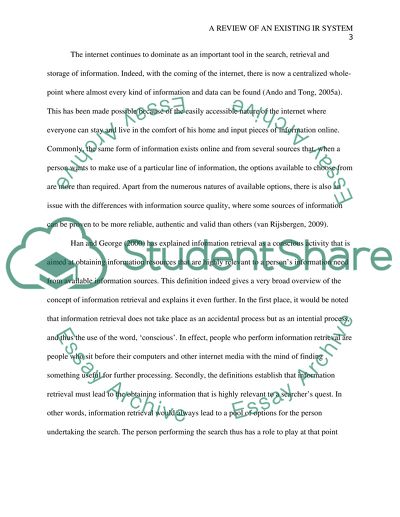Cite this document
(“A review of an existing IR system Essay Example | Topics and Well Written Essays - 3250 words”, n.d.)
Retrieved from https://studentshare.org/information-technology/1493528-a-review-of-an-existing-ir-system
Retrieved from https://studentshare.org/information-technology/1493528-a-review-of-an-existing-ir-system
(A Review of an Existing IR System Essay Example | Topics and Well Written Essays - 3250 Words)
https://studentshare.org/information-technology/1493528-a-review-of-an-existing-ir-system.
https://studentshare.org/information-technology/1493528-a-review-of-an-existing-ir-system.
“A Review of an Existing IR System Essay Example | Topics and Well Written Essays - 3250 Words”, n.d. https://studentshare.org/information-technology/1493528-a-review-of-an-existing-ir-system.


